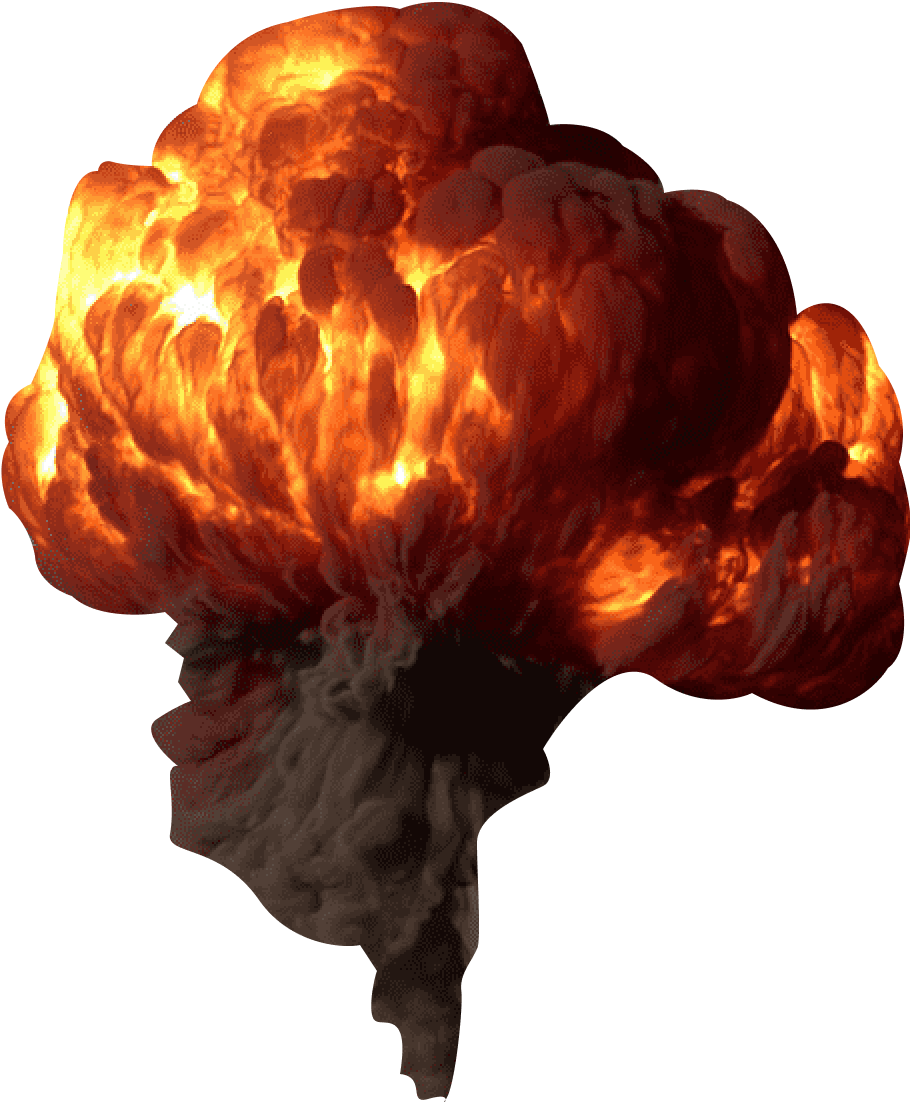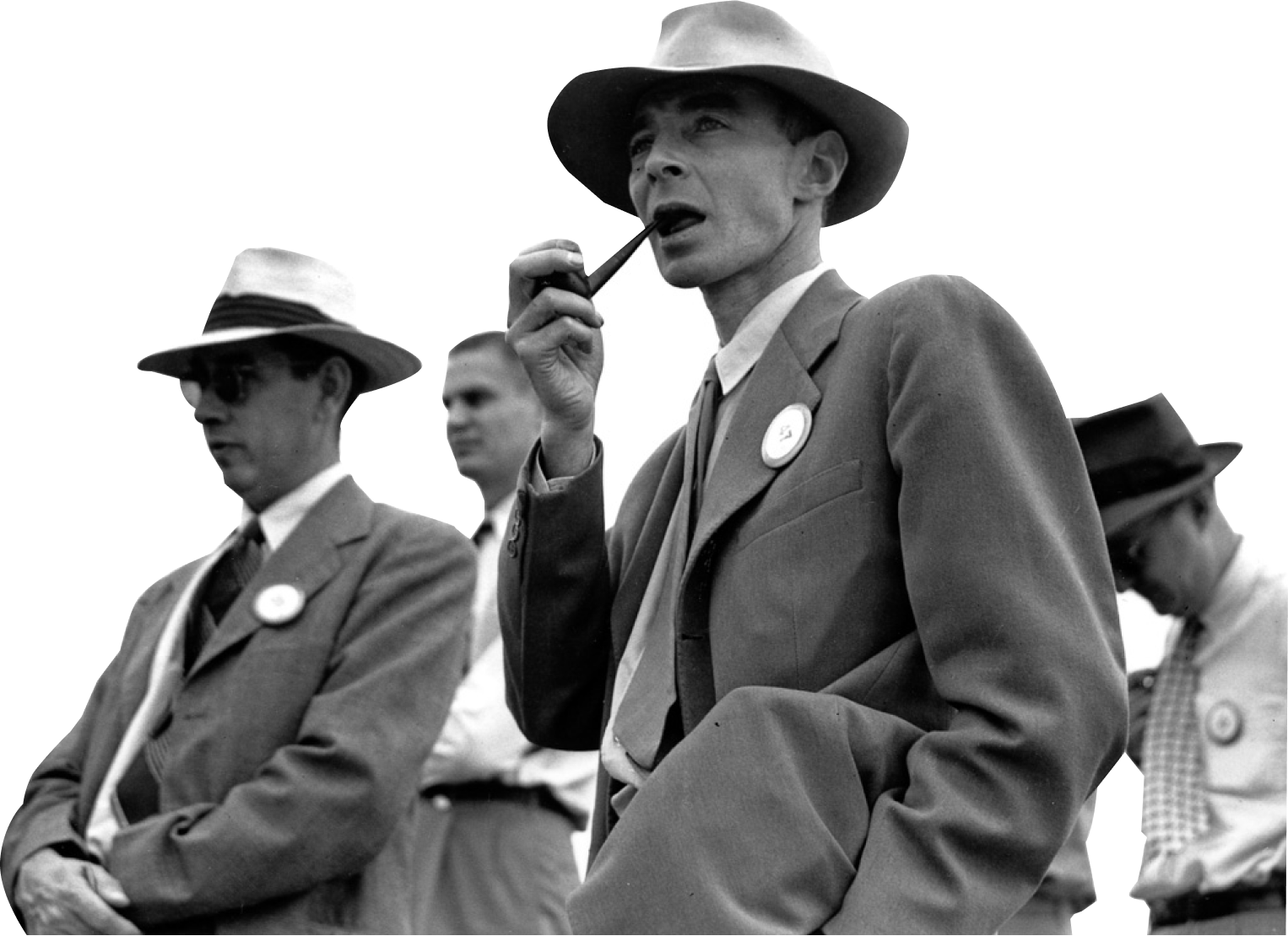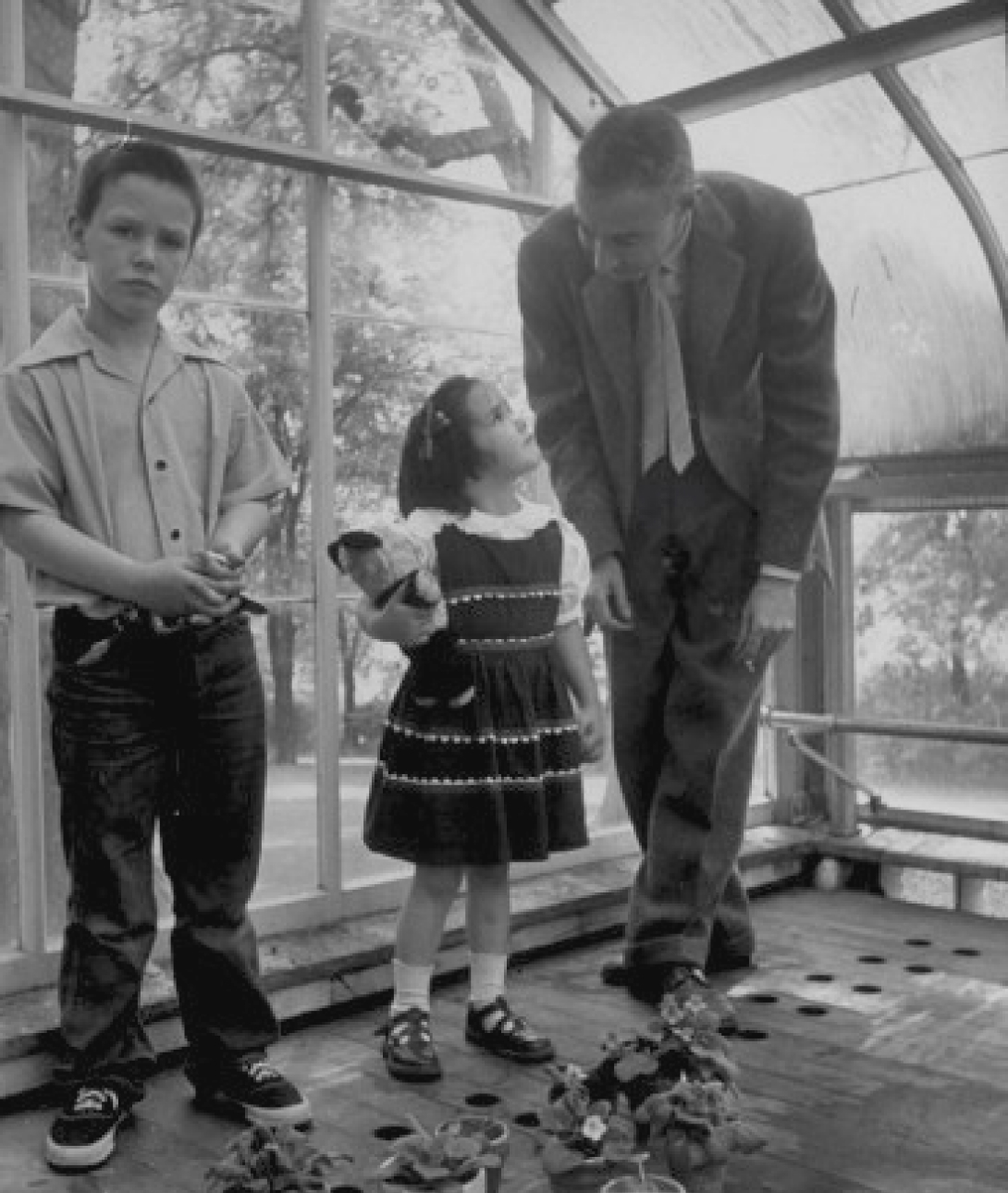

FATHER
of the
atomic




BOMB


Julius Robert
Oppenheimer
Father of the Atomic Bomb
22.04.1904-18.02.1967

ENG
In 1947, the specialized journal Bulletin of Atomic Scientists came out with an unusual cover.

It had a schematic representation of a clock whose hands showed 23 hours and 53 minutes.
"The Doomsday Clock is so named because the time on it symbolizes how close mankind is to death. The closer to midnight, the more likely death.
From to the present day, a special committee of scientists and experts has been updating the time on this clock every year in accordance with the world situation.
Over the past decade, the minute hand has changed its position 23 times, moving back and forth toward midnight. In the last two years, the clock has shown 23:58.



The Bulletin of the Atomic Scientists, and thus the clock, was invented by people who worked on the atomic bomb in the 1940s, and who were the first to realize the horror that this invention could bring.
At various times the authors of the magazine were such people as Albert Einstein, Max Born, and Nikolai Semyonov.
Among the authors was the hero of this long story, Julius Robert Oppenheimer, the man who directed the first nuclear test in history and who bears the title "father of the atomic bomb.
THE CHILD
Eminent physicist, born April 22, 1904, in New York City. His father moved from Germany as a boy; later in the United States he became rich by importing fabrics.
At the age of five, Robert was collecting mineral specimens. His grandfather sent him from Germany many interesting stones. When the boy was no more than eleven years old, he was accepted as a member of the New York Mineralogical Club.
Little Robert.
After high school, Robert went to Harvard University. He was going to study chemistry, although at first he dreamed of becoming a poet, then an architect.
In fact, Oppenheimer continued his well-rounded studies: he studied Greek and latin, physics and chemistry, and also published his poetry from time to time.
In 1925 he graduated from Harvard (in three years instead of four) and graduated with the highest marks. And sent to continue his education in Europe.
Robert was accepted to Cambridge, where he began work in the Cavendish laboratory under Rutherford. This laboratory was then one of the commanding heights in young atomic science.
But Oppenheimer soon received an invitation to move to the University of Göttingen, which immediately after World War I became one of the centers where the revolution in modern physics was taking place.
New ideas that radically changed the foundations of the physical view of the world were taught by those who created them, and students felt called upon to contribute to the construction of theory.
His dissertation entitled "Born-Oppenheimer Approximation" makes a significant contribution to the study of the nature of molecules. Finally, in 1927 he graduates from the university with a Ph.
CAMBRIDGE. THE FIRST STUDIES OF THE ATOM.

IN 1929 G. Oppenheimer accepts an offer to become an Assistant Professor at the University of California, H. Berkeley, where he will work for 20 years.
Since 1934, continuing his work in the field of physics, he also takes an active part in political life of the country. Oppenheimer transfers part of his salary to help German physicists seeking to flee Nazi Germany, and to support social reforms that would later be called "communist efforts.
In 1936, Oppenheimer was promoted to full professor at the National Laboratory at Berkeley.
Robert Oppenheimer as a student.
Manhattan Project
On October 2, 1939, U.S. President Franklin Roosevelt received a letter from Albert Einstein, one of the world's most respected physicists.
In his letter Einstein reported that German scientists were working on the conversion of uranium into a new source of energy, and their work could lead to a new type of bomb, which in its destructive power would be many times greater than any existing weapons.
Until December 7, 1941, the Japanese attacked an American naval base called Pearl Harbor. From that moment on, enormous material and human resources were thrown at development of the atomic bomb.
The U.S. nuclear program was codenamed the Manhattan Project, and General Leslie Groves became its leader.
It was a conservative and hardy military man who, to the great surprise of many, suggested that Robert Oppenheimer be appointed scientific director of the project.
Although at first glance there were enough other candidates more suitable for the role. Robert, always distant from politics, accepted the offer.
The 38-year-old physicist began his work with tremendous enthusiasm and was able to prove himself brilliantly in this responsible position.
As a result of the project's super effort, three bombs were created by July 1945, whose names sound like a mockery, given the fate that befell them in the future.
The bombs were called:
"THE THING",
"THE FAT MAN"
AND
The "thing" was going to be blown up first during the test test.









"LITTLE BOY."
On July 11, a car arrived at the laboratory with a small container weighing about 6 kilograms.
This seemingly unremarkable container was worth about $1 billion, because it contained all the plutonium in the world that existed at that time.
Plutonium was the heart of the scientist's bomb, and now, everything was ready for the first nuclear explosion in history.
The site for the first nuclear test was called "Dead Man's Way. It was suggested by Oppenheimer himself.
The bomb was set to explode at midnight on July 16, 1945, but it rained all night and it was only near dawn when the sky cleared.
And then, in the dead silence of the morning, the gray desert froze for an moment and a second later exploded with a blinding white light...

Robert and the team at the Trinity Challenge



Robert had always maintained that he felt no guilt about his involvement in the Manhattan project. He was even going to sue the director of the theatrical production of the first nuclear test, which portrayed Robert as a tragic, remorseful hero.
They said afterwards that they became different people in a second.
But no matter what Oppenheimer said, the rest of his life indicated that the scientist could never come to terms with his action and accept the so-called "sacred duty.
For his work as a leader in 1946, Oppenheimer was awarded the Presidential Medal of Service.



In 1965, Oppenheimer was asked during a television program to recall that moment again:
"we knew that the world would never be the same again. a few people laughed, a few people cried. most were silent. i remembered a line from the holy book of hinduism, the bhagavadgita: 'i am death, the great destroyer of worlds.' i guess that we all thought of something similar in one way or another."

Post-war activities






After the atomic bombings of Hiroshima and Nagasaki, the Manhattan Project became public, and Oppenheimer became the national spokesman for science, symbolic of a new type of technocratic power.
His face has appeared on the covers of Life and Time magazines. Nuclear physics became a powerful force as governments around the world began to understand the strategic and political power that comes with nuclear weapons and their terrible consequences.
Oppenheimer's position changed markedly. In his speeches the scientist fiercely and obstinately defended the necessity of strict international control over the use of nuclear weapons and also called for maximal openness on this problem.

After the successful testing of the atomic bomb, the Cold War was gaining momentum and anti-war speeches by an influential scientist were highly irrelevant to the current agenda.
As a result, in 1954, special hearings were held at which prewar documents were extracted from the dust archives, on the basis of which Oppenheimer was accused of collaboration with communists.
He was deprived of all influence, authority, and access to secret information. As the years passed, it became well known that Oppenheimer never betrayed America or spied for the Soviet Union.
But then, betrayed, disgraced, and crushed, he returned to his scientific pursuits and completely withdrew from the problems associated with nuclear weapons.


He built a house on the ocean and disappeared there for months, spending time with his family and boating.
In 1965, Oppenheimer, who had been an avid smoker since his youth, was diagnosed with laryngeal cancer. At first he had an unsuccessful operation, then chemotherapy, which did not help either.

On February 18, 1967, Robert Oppenheimer died.
In 2023, a film about Robert will be released by director Christopher Nolan.
The film will star international stars, and the scientist himself will be played by Irish actor Cillian Murphy.


THANK YOU for your attention!
All materials are taken from open sources on the Internet
The project was created for non-commercial purposes
Robert, his wife Catherine, and their children, son Peter and daughter Catherine.
I will be very happy to cooperate with you!
Click on my name or photo.
Cillian Murphy as Oppenheimer.

